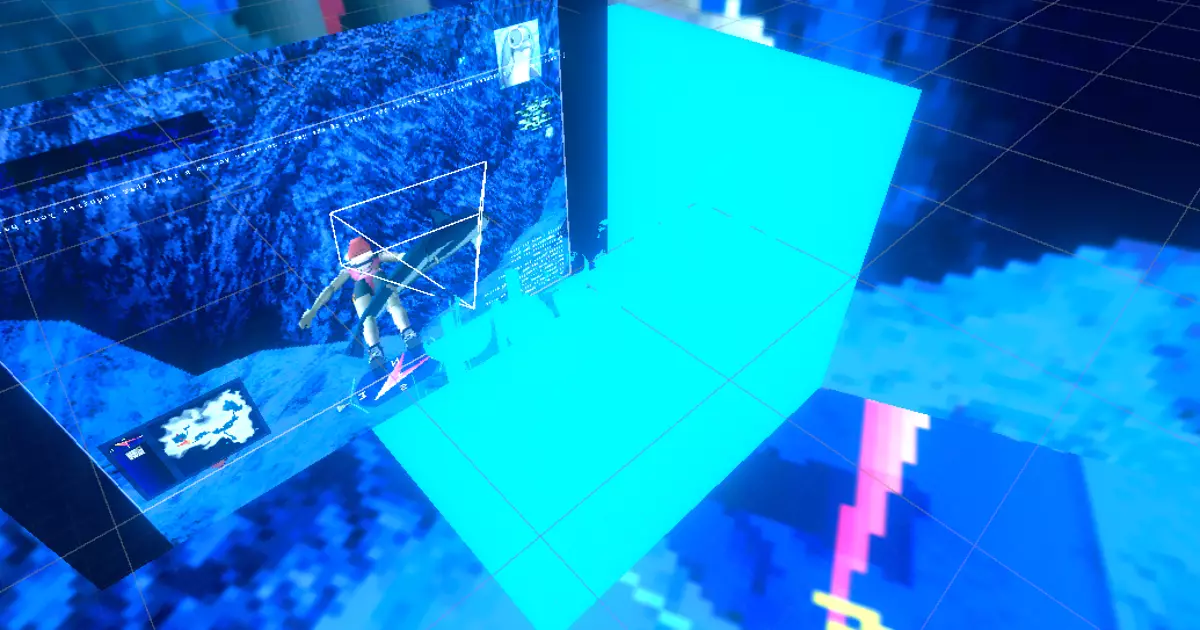The PlayStation 1 (PS1) has become an emblematic artifact in the world of gaming, often synonymous with moody aesthetics and horror-inspired narratives, particularly for a newer generation of players. As titles like Silent Hill or Resident Evil dominate the cultural memory of gaming on the PS1, there lies a concerning potential that these vivid, albeit haunting qualities overshadow the broader spectrum of experiences that the console offered. Alongside this atmospheric decay, we find a burgeoning community of indie developers eager to reclaim and reinterpret those pixelated realities. Among these efforts is Water Level/b.l.u.e. EXPLORATION, an experimental game crafted by New York-based designer Hatim Benhsain.
Water Level/b.l.u.e. serves as a striking reminder that the PS1 transcended mere fog and dread, showcasing a vibrant palette waiting to be explored. Benhsain’s project is a reimagining of b.l.u.e.: Legend of Water, a Japan-only title that invited players into a surreal underwater adventure with a protagonist and her dolphin companion journeying through alien ruins. However, Water Level/b.l.u.e. takes this nostalgic premise and infuses it with a new life, crafting a layered experience that melds fragments from a multitude of games.
What Benhsain achieves is not simply an homage but a captivating deconstruction of the original game. The mechanics of b.l.u.e. are deftly reworked, allowing players to explore a vast realm that reflects the essence of nostalgia while dynamically interacting with both familiar and foreign elements. By layering the visual and auditory cues from beloved titles like Dark Souls and Super Mario 64 within the gameplay, Benhsain creates a pastiche that feels both nostalgic and innovative.
Plunderludic: A Term of Engagement
The term “plunderludic,” coined by Benhsain, likens the game’s composition to an interactive collage that subverts our understanding of traditional gaming narratives. Unlike mere emulation or recreation, a plunderludic game offers players an interactive experience that invites curiosity about its influences and acknowledges the legacy of gaming itself. This term resonates with the concept of remix culture, encouraging players to not only engage with the game but to reflect on the broader tapestry of influences that shape digital experiences.
Drawing connections to cultural figures like Bertolt Brecht and the Fluxus art movement adds layers of significance. These references evoke notions of subversion and playfulness, inspiring players to think critically about the nature of art and engagement in gaming. The inclusion of these ideas nudges players to challenge the boundaries of conventional gameplay and question the source material while simultaneously engaging with it.
One of the standout elements of Water Level/b.l.u.e. is its celebration of the act of swimming—both as a physical experience and an artistic exploration. In an era where graphical advancements are commonplace, Benhsain’s game employs stylistic choices that evoke the magical follies of underwater exploration found in classic PS1 titles. This contrasts sharply with today’s hyper-realistic simulations that may lack the sense of discovery and wonder that characterized earlier gaming experiences.
As players navigate through environments awash with thematic references and visual splendor, they may find themselves reminiscing about their own favorite aquatic levels and moments in gaming history. There is a noticeable vulnerability in sharing such experiences, which can cement a player’s connection with the game and with others in the community. This dialogue creates a space for nostalgia and fosters a sense of camaraderie among players as they collectively celebrate the diversity of experiences beyond mere horror.
A Call to Adventure
The resurgence of interest in games like Water Level/b.l.u.e. EXPLORATION is more than a nostalgic trip down memory lane; it’s an invitation to explore uncharted territories within gaming. Benhsain challenges us to rethink our perceptions of game design and its capacity to evoke wonder. From the vibrant colors and fluid movement to the clever intertextual references, this game exemplifies a growing trend among independent creators to push the boundaries of what interactive experiences can and should be.
As players, revisiting levels that introduce us to both primal fears and delightful discoveries allows us not only to relive the past but to actively participate in the ongoing evolution of gaming culture. So take a plunge into this vibrant world, and don’t forget to share your own underwater sagas—old or new—because the most important journeys in gaming are often those we embark on together.

